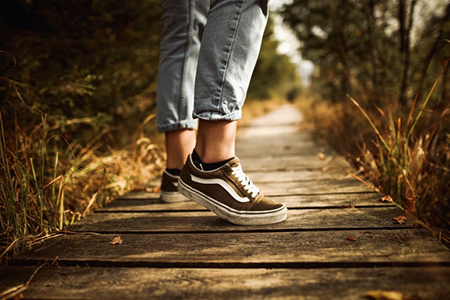
This is Your Brain on Curiosity
When was the last time you experienced genuine curiosity? Where were you at the moment? What captured your attention (or imagination!) and compelled you to investigate? I vividly remember the last time I experienced intense curiosity. I was planning a trip to Dallas, TX, to visit family for six or seven days. As a devoted fan of Home and Garden Television (HGTV) and a diehard Fixer Upper* groupie, I knew that I had to find a way to get from Dallas to Waco that week, even if I needed to ride with Uber.
I know what you must be thinking. “Really? You must be joking.” However, Waco is home to America’s current sweethearts, Chip and Joanna Gaines, and is the location where Fixer Upper is taped. What makes the city so fascinating is that Fixer Upper has almost single handedly transformed the city into a growing, thriving place to live, work, and raise a family—in the disastrous wake of the 1993 “Waco siege.” (The “Waco siege” refers to the 51-day standoff between federal agents and the Branch Davidians, an apocalyptic Christian sect, which resulted in the deaths of 78 people, including 25 children.)
After much cajoling and encouragement, my sister and niece agreed to join me for the 95-mile road trip to Waco. (Thankfully, my sister is a raving Fixer Upper fan, too, and she agreed to drive us.) Upon arriving in Waco, we felt exhilarated and ready for an adventure. We spent the day exploring Magnolia Market (aka, “the Silos”), enjoying gourmet grilled-cheese sandwiches from one of the excellent food trucks at Magnolia, and exploring the sights and sounds of Waco through the lens of Fixer Upper. The three of us had a lovely time, and we returned to Dallas that evening feeling “jazzed” about our day trip. Most importantly, we made great memories that day as a family—thanks to our sense of curiosity and willingness to see where the journey would take us.

Photo Credit: Pixabay
Five Benefits of Curiosity
It turns out that curiosity is more than an interesting phenomenon that can lead to fun-filled adventures. In his fascinating book titled Curious: Discover the Missing Ingredient to a Fulfilling Life, Todd Kashdan argued that we benefit in five ways from developing and nurturing our curiosity:
(1) improved health and wellness;
2) greater analytic ability, problem-solving skills, and overall intelligence;
(3) increased happiness;
(4) enhanced social relationships, and
(5) a greater sense of meaning and purpose.
These five benefits accrue as a function of what physiologically happens to our brains whenever we experience curiosity. Although many areas of the brain are involved, something fascinating happens when our neurotransmitters kick in. Dopamine is released, causing anticipatory excitement and a desire for reward fulfillment. Natural opiates surge, yielding the pleasure sensation of liking. Cortisol is released, regulating any stress that accompanies “the dance between curiosity and fear.” And the hippocampus is energized resulting in new memories. (Many thanks to Wikipedia for explaining this complex process in simple terms.) In short, our brains literally get off on curiosity.

Photo Credit: Tobi at Pexels
Nurturing Your Sense of Curiosity
So what can you do to nurture curiosity, which naturally declines with age–especially if you do little to strengthen it? The short answer is to find ways to strengthen it. Here are five simple, inexpensive ways to grow and develop your curiosity:
- Get out of the house and explore the world around you. Phone a friend and meet for lunch at a new restaurant in town. Go for short walks in a local park with a friend. Attend a symphony or jazz concert with someone whom you would like to get to know. Take on the “great ice cream challenge” – visit every ice-cream purveyor in town and make your final selection. To double the fun, ask a friend to join you. Your mission is expose yourself to as many new and novel stimuli as possible. Novelty is the enemy of boredom, and boredom is the enemy of your brain as well as your natural curiosity!
- Visit your local library or favorite indie bookstore regularly. Browse the latest books and magazines on the shelves. If a front cover grabs your attention, investigate further. Solicit recommendations for “great reads” from a librarian or bookseller and ask why they are making that recommendation. Attend author events and book signings. Then, stay afterward and talk with the author. Every time you read or hear new or intriguing ideas, you increase the chances of spurring your curiosity, making you want to learn more.
- Ask a million questions. Young children are especially good at asking questions because they are naturally curious about virtually everything. Asking why is especially good for engaging your brain and tickling your sense of curiosity. Asking why triggers imagination, stimulates ideas, and encourages you to seek answers to challenging questions.
- Watch TED Talks regularly. TED Talks are short, powerful presentations designed specifically to “stir your curiosity.” They are available via the Internet and cover a wide variety of subjects, including technology, entertainment, design, business, science, and global issues. What’s especially appealing about TED Talks are the fascinating speakers and topics (2800+ and counting); short duration (18 minutes or less); and availability in several languages. A few of the most recent TED talks include “A New Way to Remove CO2 from the Atmosphere”; “Why Teens Confess to Crimes They Didn’t Commit”; “The Agony of Opioid Withdrawal – and What Doctors Should Tell Patients about It”; and “The Journey through Loss and Grief.” Definitely check out the many intriguing TED Talks that are available to you at www.TED.com.
- Take a continuing education class about something you love–not the graded kind, but a course that’s designed to develop a particular interest or passion. Examples include arts and crafts, culinary arts, drones, financial well-being, health and wellness, history, languages, literature, music, nature, and photography to name just a few. Usually such courses are short in duration (e.g., one-to-three hours; half day; full day; a couple of hours in the evening or on a Saturday morning, offered once a week, or for four-to-six weeks). Continuing education courses are minimal in cost, and they are available online through Lynda.com or offered by a local community college, 4-year college, or university.
Hopefully, these recommendations will help you develop a personal plan for growing and nurturing your curiosity. In the process, you will create a life that’s filled with greater meaning and purpose—not to mention a little adventure and fun.
